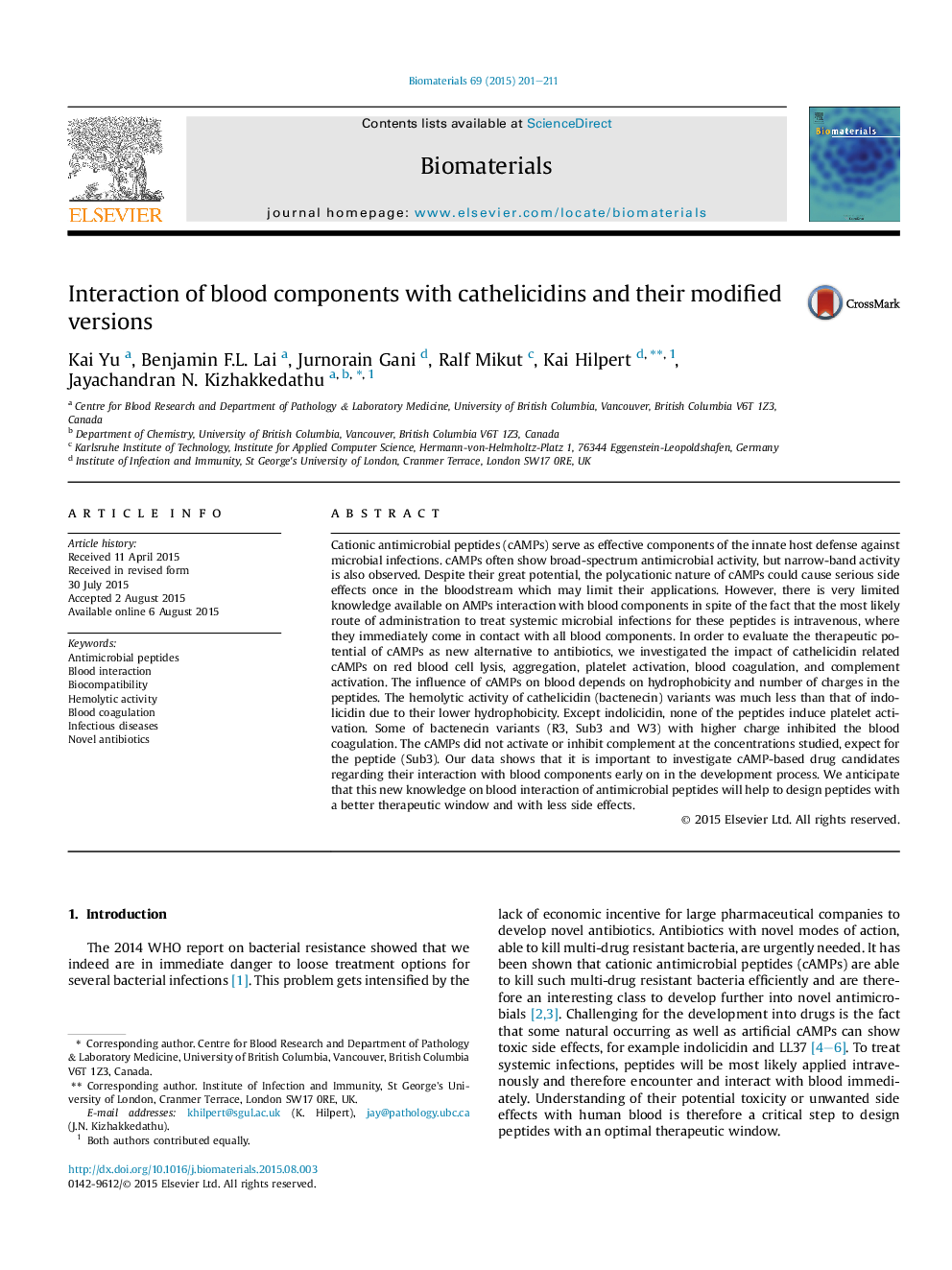| کد مقاله | کد نشریه | سال انتشار | مقاله انگلیسی | نسخه تمام متن |
|---|---|---|---|---|
| 5557 | 400 | 2015 | 11 صفحه PDF | دانلود رایگان |
Cationic antimicrobial peptides (cAMPs) serve as effective components of the innate host defense against microbial infections. cAMPs often show broad-spectrum antimicrobial activity, but narrow-band activity is also observed. Despite their great potential, the polycationic nature of cAMPs could cause serious side effects once in the bloodstream which may limit their applications. However, there is very limited knowledge available on AMPs interaction with blood components in spite of the fact that the most likely route of administration to treat systemic microbial infections for these peptides is intravenous, where they immediately come in contact with all blood components. In order to evaluate the therapeutic potential of cAMPs as new alternative to antibiotics, we investigated the impact of cathelicidin related cAMPs on red blood cell lysis, aggregation, platelet activation, blood coagulation, and complement activation. The influence of cAMPs on blood depends on hydrophobicity and number of charges in the peptides. The hemolytic activity of cathelicidin (bactenecin) variants was much less than that of indolicidin due to their lower hydrophobicity. Except indolicidin, none of the peptides induce platelet activation. Some of bactenecin variants (R3, Sub3 and W3) with higher charge inhibited the blood coagulation. The cAMPs did not activate or inhibit complement at the concentrations studied, expect for the peptide (Sub3). Our data shows that it is important to investigate cAMP-based drug candidates regarding their interaction with blood components early on in the development process. We anticipate that this new knowledge on blood interaction of antimicrobial peptides will help to design peptides with a better therapeutic window and with less side effects.
Journal: Biomaterials - Volume 69, November 2015, Pages 201–211
